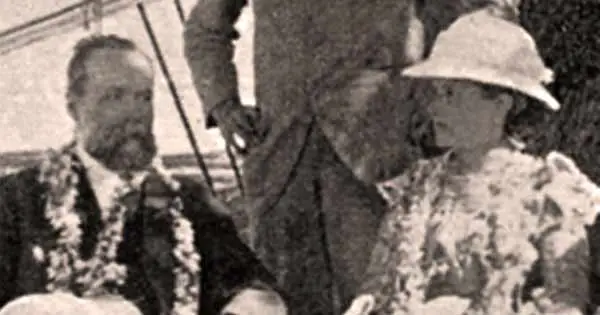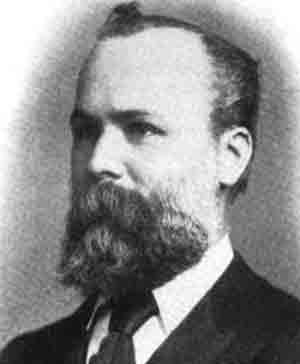Annie Maunder was a pioneering astronomer from Strabane, Co Tyrone who didn’t let the lack of women’s rights stop her from making a significant contribution to science.
She was born Annie Russell in 1868, and went on to become one of the world’s leading experts on the science of the sun.
Unfortunately for Annie, she didn’t receive the credit she deserved for her work because female scientists were not recognised at the time.

Instead her achievements were attributed to her husband, Walter Maunder. Walter was also an astronomer but did not have the same level of talent and expertise as his wife.
Studied at Cambridge University
It had been the story of Annie’s life. She won a scholarship to the prestigious Cambridge University, but didn’t get a degree at the end of her course, as they were not given out to female students.
Annie worked for a short while as a school teacher but left because she was keen to move back into science.
She took a job at the Royal Greenwich Observatory but was never able to climb from the lowest rank. The fact that she got a job at all was thanks to Observatory director Sir William Christie, who wanted to ‘experiment’ by employing women.
Annie was offered a job thanks to her college education but was given the lowly position of ‘supernumerary computer’, an entry level role usually performed by teenage boys.
The pay was poor but she loved the work. She was in the solar department and was part of a team that studied the sun, sunspots and magnetic storms.
Annie met her husband Walter Maunder

The leader of her department was the respected astronomer Walter Maunder – Annie’s future husband. Maunder was 18 years older than Annie and, while he was well respected, he had not achieved the same level of education as Annie.
When Annie and Walter got married in 1895, she was made to resign due to tight restrictions on married women working in the public service. She had only spent four years at the observatory.
Despite the setback, Annie carried on undeterred. She and her husband collaborated for 33 years. Throughout this time, the couple travelled all over the world to witness remote eclipses, including India, Algiers, Mauritius, Norway and Labrador.
Before they travelled to India, in 1898, Annie designed her own camera which was able to capture an image of a 10 km streamer from the sun’s corona. At the time it was the longest that had then been seen.
However, due to the customs of the day, the photograph was published under Walter’s name.
Annie and Walter Maunder’s ‘butterfly diagram’
The couple continued to work together and make important contributions. In 1904 they created a ‘butterfly diagram’ of several sunspot cycles. They mapped the locations of sunspots within the cycles, with the resulting pattern resembling butterfly wings.
They also showed that magnetic storms on Earth were caused by the sun’s corona rather than its face. These storms occurred in 27 day cycles.
Annie and Walter also confirmed the work of the famous German astronomer Gustav Spörer.
Spörer had noticed that throughout the 70 years of the Little Ice Age (1645-1715) there had been little or no solar activity. This phenomenon became known as the Maunder minimum.
In 1908, Annie published a book – The Heavens and their Story – which featured many of her photographs of the sun and the Milky Way. The book was published with Annie and Walter as co-authors. However, Walter did credit her as the primary author.
Annie Maunder finally joined the Royal Astronomical Society
Annie finally joined the Royal Astronomical Society in 1915, when the rules were changed to allow female members. She became the first woman to be elected. It was quite a turnaround as she had been refused membership 20 years earlier because of her gender.

That year, she returned to the Royal Greenwich Observatory to work as a volunteer during the war, she ended up back at the observatory for five years from 1915-20.
There is a crater on the moon that has been named ‘Maunder’ in honour of Walter and Annie.
When Walter died in 1928, Annie continued to work and was editor of the British Astronomical Association. She wrote the history of the Association on its 50th anniversary.
Annie died aged 80 in 1948. She is remembered as a great astronomer and a pioneer for women scientists. In recent decades her contributions have finally been fully recognised.
Fittingly, a biography of Annie Maunder (Lab Coats and Lace) was written by Ireland’s first female astronomer, Dr Máire Brück.
More popular articles and videos
The real life mystery of what Maureen O’Hara whispered to make John Wayne look so shocked
Matt Damon winning hearts and minds with charm assault on Ireland
Action hero Tom Cruise was once attacked by an old man in a Kerry pub
Liam Neeson speaks about his late wife in emotional interview
Dating site explains why Irish men make wonderful husband material
Billy Connolly says public should ignore politicians and listen to comedians
Take a look inside Hollywood star Saoirse Ronan’s stunning Irish home